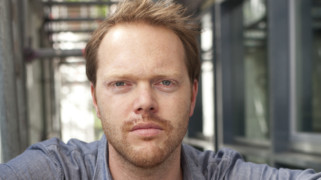What the EU would look like as a social enterprise. A tiny clue for the European agenda
On 30 May, the European Parliament hosted the first public hearing on social innovation and social entrepreneurship. The meeting brought together experts from different European countries to present practical examples of social innovation initiatives in EU member states. For me, the hearing showed that although Europe is on the right track setting social innovation as a priority, it is still looking for a proper perspective on the meaning of social innovation and social entrepreneurship. Here are three observations of the meeting and some quick thoughts on one perspective that is almost absent from the debate.
#1 “Soziale Innovation”
First, and perhaps least important, there were a lot of German speaking experts in the panel and also in the audience. Quite likely it has to do with the fact that the hearing was chaired by Heinz Becker, Austrian member of the European Parliament. However, I was expecting to meet at least some experts from France and, especially, the UK, which has a well-established tradition of social entrepreneurship. Their voices were almost completely missing. It’s just an observation. Not something I can’t get over.
#2 Focus on outcomes (or: products and jobs)
Second, and more important, it struck me that there was a tendency among the experts to focus on the economic outcomes of processes of social innovation (especially new social enterprises, products and jobs) rather than on the social challenges that give rise to such processes. At least part of the EU’s interest in social innovation arises from its alleged potential to produce solutions for pressing social problems. Grand challenges. However, many of today’s social issues are ‘wicked problems’; they are complex, and attempts to solve one part of the problem often result in new or previously unnoticed problems. In short, wicked problems are hard to understand and to define. Their character is only gradually revealed through attempts to solve them. Therefore, social innovation is as much about discovering what the problem actually is (problem finding and problem shaping), as it is about solutions. By nature, social innovators may start with a particular solution in mind, just to arrive at the conclusion that they are actually solving the wrong problem. This iterative dimension of social innovation was largely absent from the rather linear models of innovation presented at the hearing.
#3 Social innovation should not be an alibi
Third, many of the representatives of the social sector expressed their worries about social innovation being used as an excuse for government retreat from social issues. One of the experts, Heather Roy from Eurodiaconia, warned that for governments “innovation should not become an alibi for ignoring a particular social problem.” She argued that sometimes it is more effective to just give resources to the people concerned (let’s say income to the poor) than to subsidise third parties to come up with socially innovative solutions. I think she has a point. Any government that promotes social innovation as a replacement of government involvement in particular social issues fails to see that governments have their own share in social innovation processes. That is why at Kennisland we try very hard to stimulate public officials to be social innovators themselves.
Two dominant perspectives. One missing
At the hearing, then, there were actually two dominant views on the meaning of social innovation. On the one hand, there was a lot of talk about the economic potential (in particular job creation) of social innovation and social enterprises. On the other hand, social innovation and social enterprises were put forward as potentially beneficial in domains where governments retreat or are struggling to uphold existing levels of public services.
I do not intend to dispute the validity of either one of those perspectives. However, I think that a helpful third perspective is largely absent from the European debate. One that balances between the business approach promoted through social entrepreneurship and the broader notion of tackling social problems embodied in social innovation.
Third perspective. Unlikely innovators
A distinguishing feature of the debate about social innovation and social enterprise is its insistence on unlikely innovators for the change it seeks to realise. That fact that social enterprises are looked at as an odd kind of entrepreneurial activity betrays the presumption that they combine insights and modes of operation that may not be useful for solving social issues. Similarly, civilians are (still) widely viewed as unlikely innovators by many governments, as are employees by their management and directors. In the Netherlands, for example, home care nurses were perhaps among the least likely innovators. And yet, Buurtzorg (small self-managing neighbourhood teams of nurses initiated by nurses) is now one of the most discussed social innovations in home care.
The social innovation discourse is fuelled by examples of unlikely innovators. Social innovation shows that whoever you are, and however complex social problems appear to be, you are never too small to give your four cents. Social innovation is as much about social and economic value as it is about democratising innovation. That aspect of social innovation demands some additional priorities for a (European) agenda. Let me suggest three.
First, it requires recognition of the huge innovative potential among people from all walks of life. In fact, a lot of social innovation initiatives are working on precisely this issue. You know the examples. Pragulic, for instance, employs homeless people as tour guides in the Czech capital. They were trained by professionals, but designed their own unique tours. Initiatives like these help even the least likely innovators to become agents of change.
Second and closely related, it calls for empowerment of people to get serious about their ideas for innovation. Perhaps the most appealing feature of social entrepreneurship is its empowering dimension of allowing social innovators to start working on their mission. But there may also be other ways to empower people. Besides, social entrepreneurship may not always be the most preferred route. To give you one example from our own experience at Kennisland: we work a lot with teachers to achieve change in the education system. Quite frequently, we are faced with teachers that have really innovative ideas, but feel they are unable to realise them in their professional role as a teacher. Some have sought to become entrepreneurs instead. Such a step might be good for them, but to the education system it means one innovative teacher is lost. Empowerment therefore should also be about enabling intrapreneurs – those innovating from within the system or organisation – and citizens to innovate.
Finally, and most importantly, there is a need to prioritise unlikely partnerships. As new social innovation initiatives pop up everywhere in Europe one of the key challenges for governments and the public sector in the near future is to find ways to meaningfully relate to these initiatives. Since they are usually small, not part of the established socio-economic playing field and bad at lobbying, public authorities will have to think of new ways to construct meaningful partnerships. Perhaps a creative exercise is the best starting point. Just try to imagine what the EU would look like as a social enterprise or a citizen’s social innovation initiative. Any suggestions?





